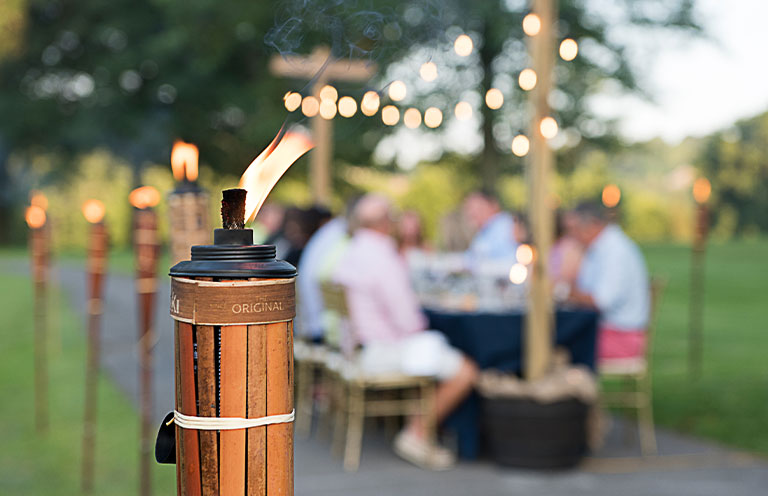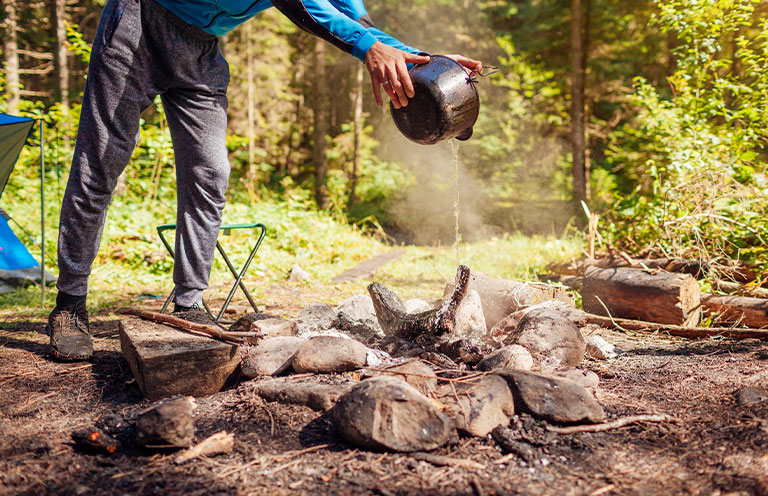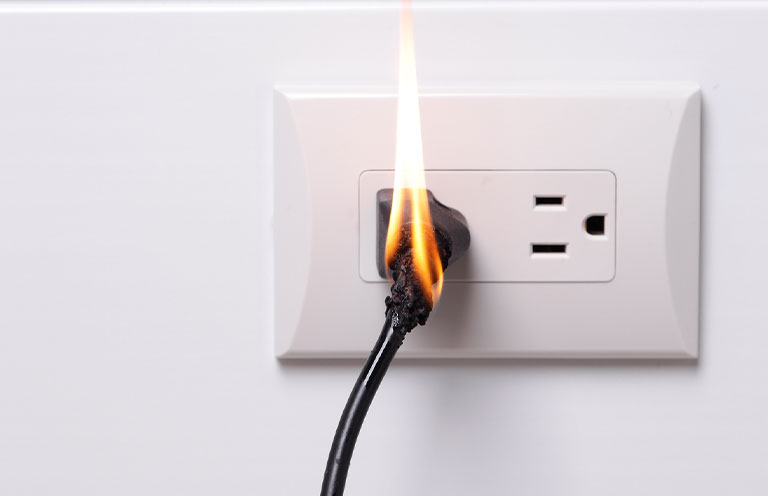How to Put Out a Fire—the Right Way
From grease fires to campfire flare-ups, these tips will help you extinguish flames quickly and safely


We’re all familiar with putting out metaphorical fires at work, but many of us may be less prepared when it comes to actual flames. Fire is an essential part of daily life—used for cooking, warmth, and telling ghost stories—but left unchecked, it can be devastatingly destructive.
Fire plays an important role in many cultures. In Fiji, for example, its presence is especially symbolic.
“[Fire] is a living presence that connects people to the land, to each other, and to their heritage. It also signifies strength, spiritual power, and respect, symbolizing purification and unity,” says Sarah Chung, cluster marketing and communications manager at Hilton Fiji Beach Resort & Spa, where guests can experience fire’s cultural role through regular torch-lighting ceremonies—a safe yet stirring way to witness its power and beauty.
If you’re planning to light your own fire—intentionally or not—here’s a guide on how to safely extinguish the most common types.

How to put out a tiki torch
Torches are a popular feature at beach destinations and resorts, but they’re also commonly used in backyards and patios at home. Chung, who has completed job-related fire safety training and certifications, lays out a few key tips to ensure these open flames (and similar ones found in other decorative outdoor items) are extinguished safely and correctly.
Invest in personal protective equipment (PPE).
This includes heat-resistant gloves and safety eyewear to protect your hands and eyes.
Use the right tools.
Always use the designated snuffer cap or extinguishing cone to smother the flame. “Never blow out a torch manually,” Chung warns.
Approach with caution.
Stay calm and steady as you approach. “Stand upwind to avoid sudden flare-ups or smoke inhalation,” she advises.
Snuff out the flame.
Place the snuffer cap firmly over the flame until it is completely extinguished—usually within three to five seconds. Chung recommends waiting a few extra seconds to be sure it doesn’t re-ignite.
Check for stability.
“Once extinguished, visually inspect the torch to ensure it is still securely anchored and poses no further risk,” Chung says.
Let it cool.
“Never touch the torch head immediately after extinguishing,” Chung cautions. Give it some time to cool completely before handling it or moving it.

How to put out a campfire
Whether you’re camping deep in the woods or at a designated site, it’s essential to put out fires safely and thoroughly. Failing to do so can lead to widespread brush fires—and potentially leave you legally liable and financially responsible.
The US Department of Agriculture provides clear guidelines for outdoor enthusiasts on both building and extinguishing fires. Here are the most important takeaways.
Before you start a fire
- Use an existing fire ring whenever possible—and make sure it’s small and, ideally, surrounded by a circle of rocks.
- Clear the area of vegetation, and keep the fire away from trees, brush, or anything flammable.
- Never leave the fire unattended. Always keep water and a shovel nearby in case you need to put out the fire quickly.
After you’re done with a fire
- Start by completely dousing the campfire with water.
- Stir the ashes and embers with soil or a stick to expose hot spots.
- Add more water, dirt, or sand to fully smother any remaining heat.
- Carefully feel the ashes and surrounding area with the back of your hand. Everything in the fire pit should be cool to the touch.
- When in doubt, add more water. If it’s too hot to touch, it’s too hot to leave behind.

How to put out a kitchen fire
If you’ve heard that baking soda is more effective than water at putting out stovetop fires, then you’ve heard right. (Though it’s only effective if readily available. Keep a box within arm’s reach of your cooking area.) The most common cause of a kitchen fire is oil—and throwing water on it can make things much worse, causing the flames to spread rapidly.
Keep a generous amount of baking soda—not baking powder—on hand to toss directly on any unintended flame. You can also invest in a Class K fire extinguisher, which releases a wet chemical designed to cut off the fire’s oxygen supply. (Fire extinguishers are labeled by letter to indicate the types of fires they’re meant for, so be sure to check before buying.) And always read the instructions on the label so that you’re prepared in an emergency.
Three things not to do during a kitchen fire:
- Don’t add any other food or cooking ingredients. Nearly everything besides baking soda is combustible.
- Don’t pour in water, milk, juice, or any other liquid. These can cause a dangerous flare-up or fireball that spreads the flames.
- Don’t try to move the pot or pan. Burning grease can spill and quickly spread the fire elsewhere.
- Don’t leave the burner on. Switch it off to eliminate the air supply. If fire is coming from an electrical appliance, unplug it.
- Don’t forget to call the fire department. It’s always better to be safe than sorry if you sense a fire is unable to be contained.

How to put out an electrical fire
Because they can start without warning, electrical fires are among the most frightening. A spark from a faulty appliance or malfunctioning wire can quickly ignite nearby—sometimes while you’re asleep or not even home.
According to FireRescue1, a trusted online resource for firefighting news, training, and safety information, here are the most important steps to follow when dealing with an electrical fire:
Make sure your smoke detectors are working.
Every room in your house should have a working smoke alarm so that you’re notified immediately if a fire starts. It’s important to test these once a month to ensure that the battery is healthy and operating effectively.
If a fire breaks out, cut the power, if possible.
Unplug the appliance. Doing so is generally safe, as cords are insulated. Just make sure you’re not touching any exposed wires or standing in water.
Add baking soda.
The household staple isn’t just effective for kitchen fires—it also helps smother small electrical fires.
Remove the oxygen source.
For minor fires, tossing a heavy blanket or fire blanket over the appliance can help, but it must fully cover the flames to be effective.
Never use water.
Water conducts electricity, which puts you at serious risk of shock or electrocution.
Use a Class C fire extinguisher.
These are specifically designed for electrical fires. Many home fire extinguishers are labeled ABC (meaning they work on multiple types of fires)—but always check the label to be sure.
Fire is essential to life. And while it can be dangerous, even a little bit of knowledge about its properties and power—and the right preparation—can keep a small mistake from turning into a full-blown inferno.
